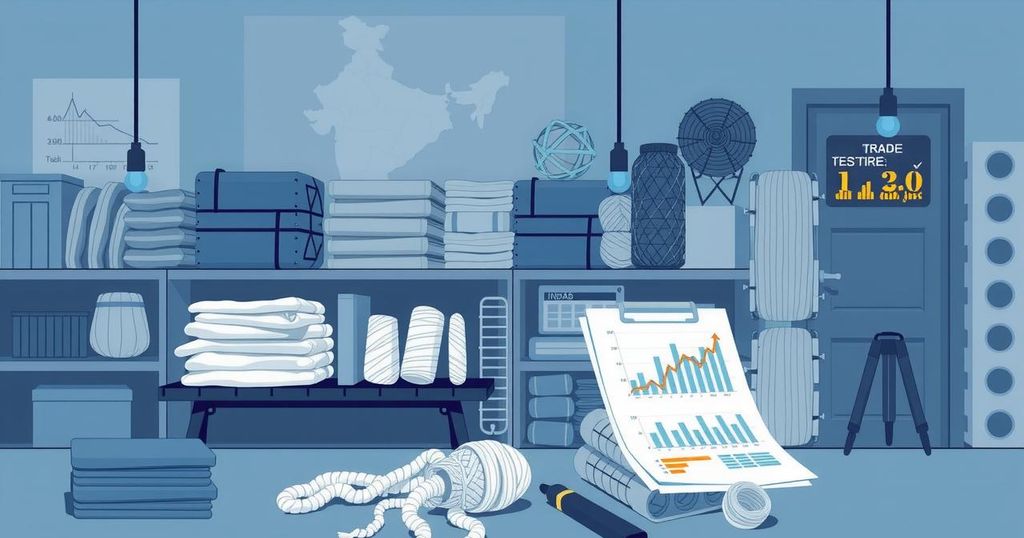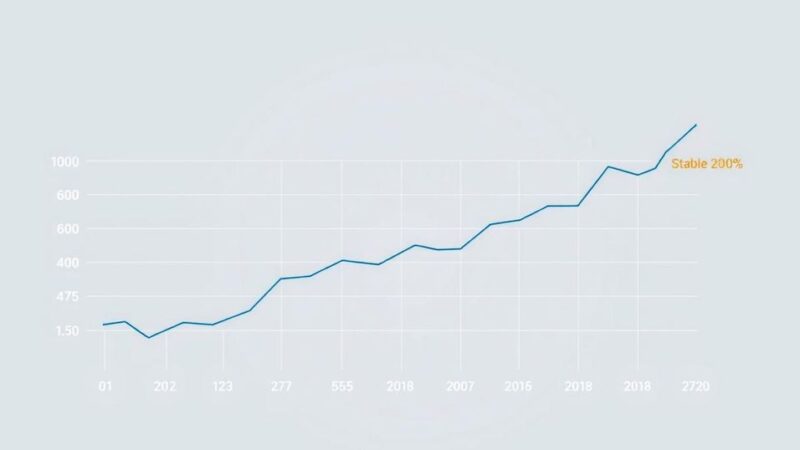India and Bangladesh have imposed trade restrictions on each other following political tensions. Bangladesh limited cotton yarn imports from India, a reaction to India’s halt of a transshipment facility for Bangladeshi goods. The diplomatic fallout has significant implications for businesses reliant on trade, particularly in the garment sector, as timelines and costs for imports increase.
Businesses in both India and Bangladesh are gearing up for the potential fallout of newly imposed trade restrictions between the neighboring countries. These restrictions follow escalating tensions stemming from recent political upheavals. Last month, Bangladesh decided to limit land imports of cotton yarn from India to protect its local industries against cheaper products. This decision was made just days after India canceled a transshipment facility it had previously provided to Bangladesh, citing port congestion as the reason.
The diplomatic relationship between New Delhi and Dhaka deteriorated further after the ousting of former Prime Minister Sheikh Hasina in August. Currently, Hasina is in exile in India, while an interim government led by Nobel laureate Muhammad Yunus has taken the reins. Tensions escalated as Bangladesh demanded Hasina’s extradition to face allegations of serious charges, including crimes against humanity, which she denies. Meanwhile, India remains silent on this extradition request.
Complicating matters, India has voiced concern over reports of violence against the Hindu minority in Bangladesh, stating that the killing of a Hindu leader highlights a troubling trend of persecution under the interim government. On the other hand, Bangladesh claims these events are politically motivated or simply everyday crimes. It’s worth noting that Hindus constitute less than 10% of Bangladesh’s population of 170 million.
As the diplomatic altercations unfold, businesses are calculating the potential costs of these trade barriers. For Bangladeshi firms reliant on cotton yarn—an essential material for their garment factories—the situation looks grim. While imports can still be conducted via sea and air, these methods are significantly slower and more expensive. Last year, India exported around $1.6 billion worth of cotton yarn to Bangladesh, a substantial portion of which was transported overland.
Anis Ahmed, who leads the supply chain company MGH Group, expressed concerns over the negative implications for the fast-fashion industry in Bangladesh. He noted that the India route allowed cargo to reach Western markets in about a week, whereas shipping by sea could take up to eight weeks. Additionally, Bangladesh, a major garment producer second only to China, exported $38 billion in clothing the previous year, with significant volumes relying on the now-terminated land and air routes through India.
The abrupt ending of the transshipment facility from India is thought by some to be linked to Yunus’s comments during a recent visit to China, where he described Bangladesh as “the only guardian of the ocean” pertinent to India’s landlocked northeast, hinting at potential regional ties to China. Such remarks have not gone over well in India, raising concerns about strategic vulnerabilities in a region often overshadowed by geopolitical tensions.
Despite these issues, analysts in Bangladesh are keen to clarify that Yunus’s comments were misinterpreted and aimed at enhancing regional cooperation. Intriguingly, during his visit to China, Bangladesh also expressed interest in a significant Teesta River development project backed by China, which could further strain Indo-Bangladesh relations.
On the ground, frustrations are also apparent as Bangladesh faces stricter Indian visa regulations post-Hasina’s ousting. Previously, about two million Bangladeshi nationals traveled to India annually, but visa approvals have reportedly decreased by over 80% in recent months, according to local sources. This situation aggravates the already-existing tensions fueled by the ongoing asylum question of Hasina.
India’s clothing manufacturers have moved to advocate for a complete ban on importing Bangladeshi garments via land routes, a move that some Bangladeshi experts warn could backfire economically. Increasing trade barriers could only exacerbate existing difficulties for both nations. Debapriya Bhattacharya, a senior economist, pointed out that Bangladesh may need to reassess transit agreements previously made with India under Hasina’s government.
Currently, India relies on Bangladeshi routes to supply its northeastern states, facilitating reduced travel time and costs. However, these transit avenues are not delivering expected results, stoking further tensions between the two nations. Bangladesh’s renewed ties with Pakistan also play into the mix, adding another layer of complexity, though experts downplay potential fallout unless there are clear strategies aimed at undermining India’s position.
As public sentiment sways in both countries, rising anti-India feelings are noticeable in Bangladesh. With local media accused of blowing out of proportion the reports about minority attacks and Islamist threats, the years of people-to-people connections risk deteriorating further. If both countries don’t manage this diplomatic crisis carefully, trade relations could suffer significantly.
In summary, the ongoing trade restrictions between India and Bangladesh have raised concerns for businesses dependent on cross-border trade, particularly in the garment sector. The imposition of these barriers comes amid serious political turmoil and growing tensions over human rights issues. As both nations navigate these challenges, the potential for deteriorating economic relations looms large, and the stakes for local economies are significant.
Original Source: www.bbc.com






